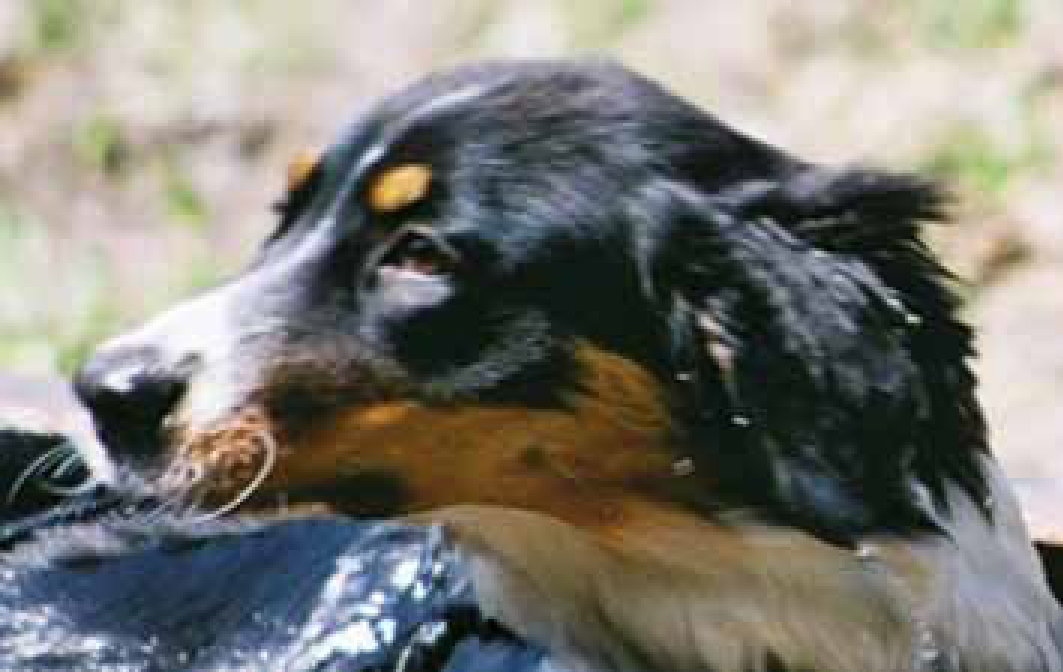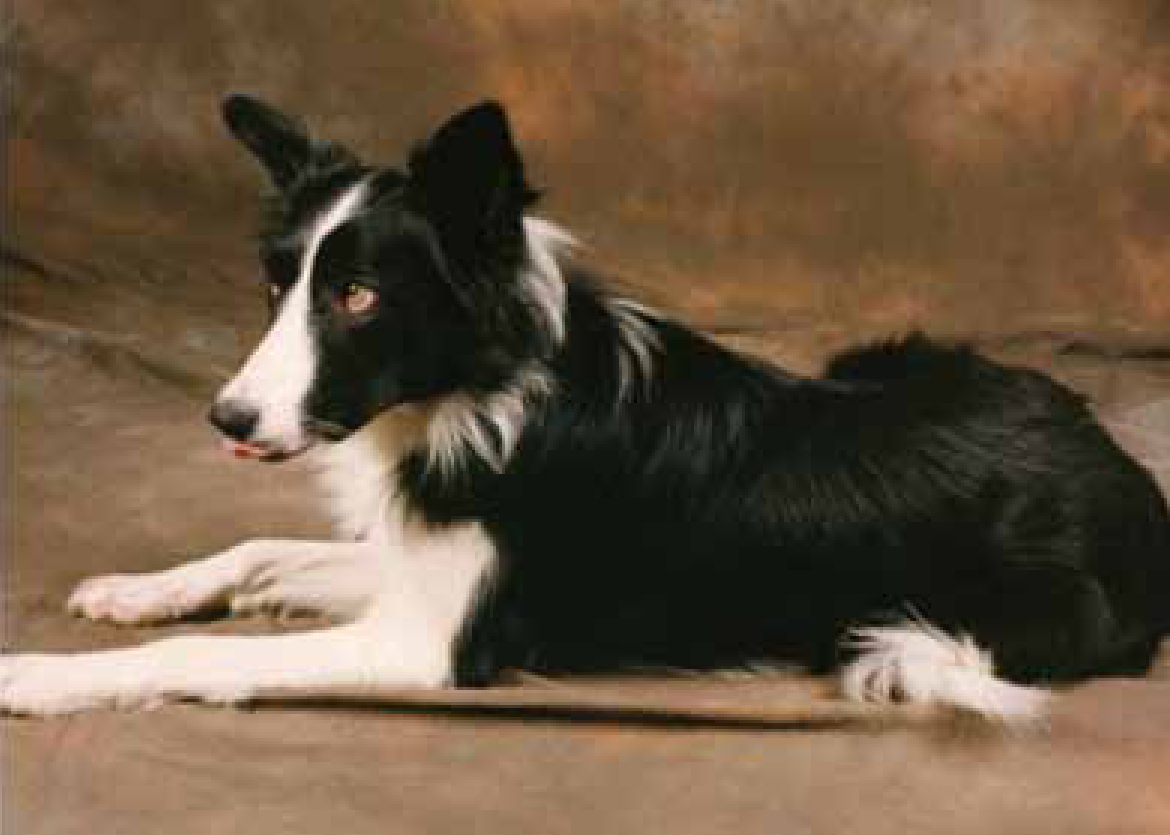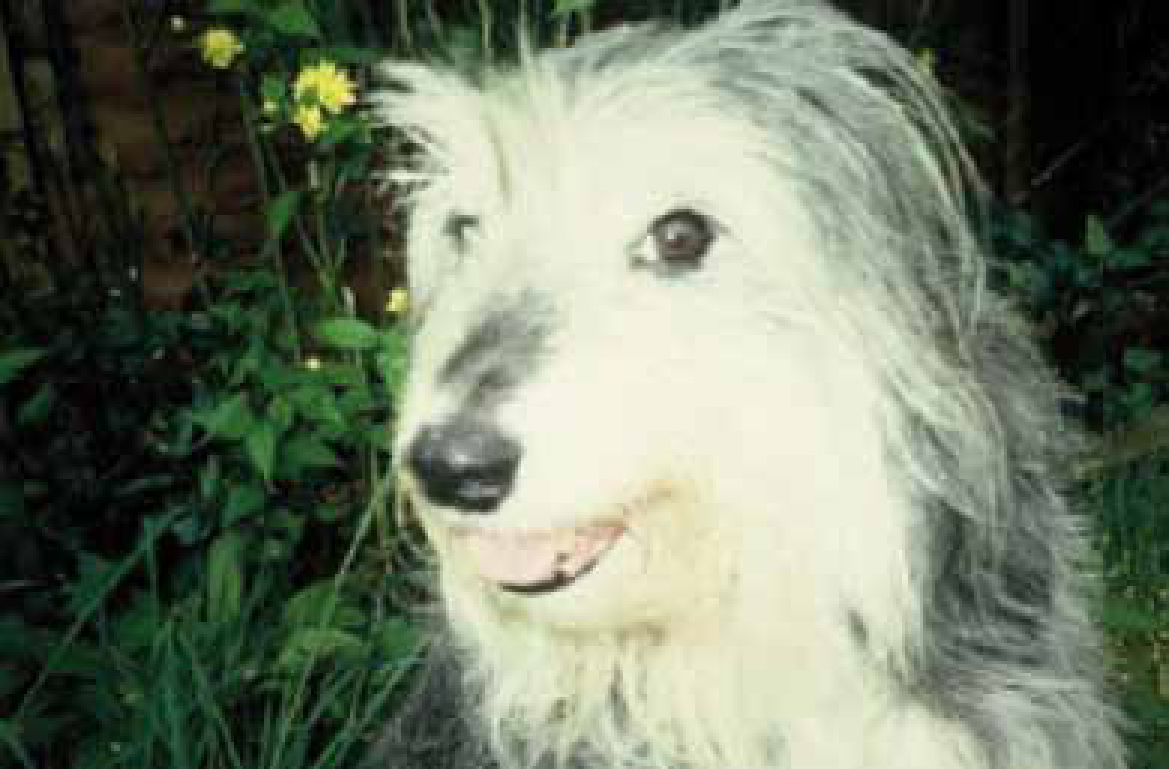Sound reactivity, fears and phobias are amongst the most common signs presented to behaviour counsellors (Overall, 2002). The use of drugs and programmes including sound desensitization CDs and dog appeasing pheromone (DAP) sprays in noise-related anxiety are well documented (Tod et al, 2005; Young-Mee et al, 2010), yet it is clear that in many cases a significant short or long-term improvement is not in evidence. Mills et al (2003) indicate that the problem of dogs fearing fireworks, for example, can't be tackled by prescribing medicine on its own and have stated that more research is needed. Sheppard and Mills (2003) cite that the delivery of pheromones was generally associated with a reduction in the intensity of fear but there were variations in the responses of individual dogs. However, it must be noted that only a small sample of dogs was used and there was no placebo control in this study, bringing into question the significance of the results.
In the author's experience there are a number of other factors that should also be taken into account, when dealing with dogs with noise-related anxiety including the lifestyle, general physiological and psychological balance of the dog, along with clearer guidelines for practitioners as to how owner actions may influence outcomes.
Before embarking on any behavioural programme a veterinary health check is essential to rule out medical disorders. In many cases there is a tendency to treat the signs rather than the underlying cause of the problem and the individual itself. VanFleet (2011a) states that ‘ignoring a dog's significant fear and focusing solely on changing the dog's external behaviour is actually denying the dog's reality. It does not reduce the fear and only teaches the dog to cover up the signs (behaviours) of fear.’ Each case needs an individual approach according to the overall health and lifestyle of the dog, the owner resources, awareness and understanding.
Factors
Genetics, parenting, barren non-stimulating environments, pain and early or traumatic experiences are major factors in the development of behaviour traits (personal experience). Vage (2010) in his doctoral thesis studied genetically controlled behavioural aspects in dogs with a particular focus on aggression. The study revealed a variation in genes related to serotonin and dopamine in dogs. Using these variations, the study discovered connections between aggression and genes. Lindsay (2000) states that ‘the most common source of fear is related to the experience of pain.’ However, the widespread assumption that fear is simply a conditioned response to cues associated with pain is not a viable position, according to neurobiological research (Panksepp, 1998).
Anxiety in any vulnerable dog can be compounded when an owner exposes it to a level and range of stimuli outside of the dog's skill level, inadvertently sensitizing it to the surroundings. Positive socialization is essential: any experience the dog has should be one with which it feels comfortable.
In order to provide appropriate quality socialization the dog's body language and emotional state must be recognized and each experience be properly managed. How a dog responds and develops having been involved in a traumatic situation will depend on its past experience in a related situation, but can also be influenced by the response of those in the immediate environment. Understanding the effect such responses can have is another important factor in the management of fears and anxiety. Rogerson (1997a) states that ‘if the stimulus is seen [by the dog] as being of no consequence; then on future exposures the dog will usually ignore its presence. If, however, the stimulus is perceived by the dog as being potentially harmful then the dog will quickly learn avoidance or fear behaviours either during, or leading up, to subsequent exposures’.
Once a dog has become extremely familiar with a testing environment, chronic stress often manifests itself through heightened sensory responses. For example, during a familiar and routine walk, the dog may whine approaching certain landmarks, display continuous, rapid scanning of the environment and frantic superficial sniffing. Left unresolved with repeated inappropriate experiences, what may start as a specific fear can develop into a general anxiety, complex fear or even phobia. Early appropriate intervention is the key to prevention and management (personal experience).
Owner response to canine anxieties
Owner response can be a substantial contributory factor in a dog's behaviour (Dodman et al, 2004). VanFleet (2011a) says ‘we know that dogs experience emotions and they are responsive to our emotions’.
A dog will react in a number of ways when anxious or fearful, depending on the individual's experience, emotions, intensity of the experience and the available options. Clear signs of fear are easy to see (shaking, panting, tense muscles, frequent urinating) (Rugaas, 2005a) but the more subtle build up from a calm state to a stressed state is something that humans tend to lack awareness of or frequently misinterpret (Tamia and Gallagherb, 2009). Turning the head away, licking the lips, yawning and superficial sniffing are all examples of typical signs of discomfort in a situation (Figures 1–4) (Beerda et al, 1997; Gazzano et al, 2010; King et al, 2011). When these are repeated frequently, or are seen intensifying, it is clear that intervention is necessary. Care should be taken to remove the dog from the situation to avoid further build up.




When there is little understanding of why the dog behaves in a particular way, owner frustration is one of the most likely outcomes. Acting through frustration is never appropriate as it may lead to detrimental acts of violence. Semmelroth (2002) states that ‘faced with an aversive stimulus, (such as a dog's unwanted behaviour) the person becomes even more short sighted and impulsive than usual’. This can in turn lead to a cycle of reciprocal counter control (O'Heare, 2007). Dogs easily pick up emotions, which can further exacerbate the situation (Farber, 2001; VanFleet, 2011b).
It is also important to take into account that dogs, like us, learn by association (Pavlov, 1927). An adverse experience such as a car backfiring when a dog is walking along a street looking at the owner or another dog, for example, can create a range of associations in the dog's mind that cannot be predicted and are often not immediately apparent. One dog might associate a similar sound with simply being in that street; another dog might associate it with traffic, another dog or even their owner. On a return visit, a dog that was previously coping well in that environment might show signs of anxiety or fear in ways as wide-ranging as trembling, clinging, or reactivity.
Unaware of the reason behind this sudden change in behaviour, many owners become insecure themselves, not knowing how to react. With both dog's and owner's stress levels increasing, both begin to exhibit erratic behaviour: the owner fluctuating between sympathy and frustration, where actions such as stroking and punishment cause conflict which in turn leads to further insecurity (Dreschela and Grangera, 2005).
In some cases the only way a dog can cope with the situation is by shutting things out (Mills and Sheppard, 2011; Rogerson, 1997b). On the surface a dog that does not show signs of reacting may seem to be cured. However, in a different situation with the perceived threat at a greater distance, or with the influence of the owner/handler or others, this same dog may react at quite a distance.
Also to be considered are those factors that increase fear (Table 1). Dogs may be wonderful communicators, but unfortunately few people can see the early signs of a dog building in insecurity or not coping. Restraint by use of certain types of equipment (for example anti pulling harnesses, head collars and muzzles) may help the owner to feel in control, but may equally serve to add to the dog's insecurity. Not being able to express emotions in a way understood by a human does not mean that those emotions are not there.
Build up |
Owner influence |
Help needed by the dog to alleviate the problem |
A dog that is afraid of something needs and uses his senses to survive. Where an owner uses a distraction technique it will only give a temporary respite from the signs of fear (personal experience). Using treats, a favourite toy or exercises such as ‘sit’ or ‘down’ may seem to take the dog's mind away from the fearful situation, but the dog is likely to be engaging superficially and on automatic pilot. Distraction may seem to help deal with the situation in the early stages, but it will interfere with the dog's longer-term ability to cope. Distraction should be used extremely rarely and only if it is really necessary. If an owner needs to use it frequently it is likely that the dog is having to experience difficult situations too often.
Tools to help
Recognition/acknowledgement
The importance of awareness and understanding of canine body language and the use of calming signals (Table 2) for anyone working with a dog showing fear, is paramount. Rugaas (2005b) maintains that calming signals ‘are used at an early stage to prevent things from happening, avoiding threats from people and dogs, calming down nervousness, fear, noise and unpleasant things’. Identification of and appropriate action at the first signs of unease will have an immediate impact. When a dog recognizes that he will be given support right from the beginning of a difficult situation and that he will be taken out of that situation he will gain trust in the owner, and the fact that he can influence the situation will also help him to deal with it. When a dog feels that he has no control over the situation, he will feel more vulnerable and will react accordingly (VanFleet, 2011b). However, it is important to take into account the whole range of the dog's body language.
| Subtle signals | Blinking/shortening the eye (lowering the lids)/nose licking/yawning/sneezing/looking away/head turn/ignoring/head dip/sniffing the ground/paw lift/shake off |
| Moderate signals | Turning body away/turning the back/moving away/sitting down/lowered body/body tension/sweaty paws/corners of mouth pulled back/rapid breathing/sudden burst of energy/animated movements/restless — unable to settle/panting |
| Intense signals | Lying down/submission/rolling on to back/tail between legs/submissive urination/ears flat back/displacement behaviours/jumping up/redirection/shutting out |
| Defensive or warning signals | Lunging/barking/freezing/growling/baring teeth/snapping/biting |
The intensity, frequency, and duration of both body language and signs of stress should be taken into account, to determine the dog's emotional state, along with the context in which they are shown and the variety of signs the dog gives off (personal experience). This combination will indicate the extent of his emotion. Whatever the situation, it is essential to react calmly and quietly, but promptly. It is important to take charge of the situation, quietly helping the dog to move away in an empathetic and supportive manner, but taking care not to be over sympathetic. Rather than commanding or telling the dog what to do, it is preferable to offer an alternative, showing and teaching him the safe options and choices. Supporting any appropriate action the dog chooses will be of benefit. While doing so it is advisable to act decisively, using calm, slow but normal movements. This may feel difficult at first, but practised reactions will help the dog to cope.
Noises at home
Where the dog has issues with fireworks or thunder, the same support methodology is required. If the dog likes to go to the bathroom for shelter, for example, a supportive presence on the way to the bathroom and once there relaxing with him will help, sitting nearby, without looking at him (use peripheral vision), not talking to him (but not ignoring him). Touch should not be initiated by the owner but if body contact is sought support can be given by allowing this. The owner should be prepared to be there for some time, calmly and quietly. Once the (perceived) danger has passed, the owner should be present with the dog without focussing on him, perhaps giving a few seconds' attention to something unrelated to him or the situation.
Moving a small every day object, picking something up from the floor, and returning to the dog to be with him for a few minutes will help a sense of normality to return. This can be repeated by quietly leaving for a minute or two then returning, gradually lengthening the time of absence. As the dog becomes more aware of what is going on he is likely to gradually regain his composure. This should be low key and, for example, a quiet, even tone ‘that's good’ can be offered if appropriate. As the dog's confidence returns, the normal routine should gradually be resumed.
Essential understanding (of owners and handlers)
Without a reasonable understanding of the dog's behaviour and how to act appropriately, it is difficult for the owner to remain rational and consistent.
Short-term management of sound sensitivity
Any action taken very much depends on the individual dog as well as the owner's commitment and resources. Each step will make a tangible difference. However, having firm foundations is essential. Many attempts to manage sound sensitivity fail, when the emphasis is on training responses rather than beginning by management — stress reduction and building self-confidence and trust (personal experience).
Gathering knowledge about triggers for fear and how the dog responds, along with recognizing how situations are generally dealt with and how this impacts on the dog, will determine the extent of each individual programme.
In the short term avoidance and management are essential. Most important is avoidance of situations the dog finds difficult, not only those that are fear inducing. For a dog worried by street sounds, for example, it is best to take the dog to places where he feels comfortable: a dog that can quietly sniff and explore generally indicates that the dog is coping (personal experience). Peaceful parks, woodland or heathland are ideal, but quiet industrial areas can also provide a relatively safe haven at an appropriate time of day. A total avoidance of daily life is not ideal, otherwise the confidence of dog and owner may decrease; however it should be noted that it is quality and not quantity that counts: fewer but better quality walks are preferable (personal experience). Where unexpected sounds occur it is essential that owners manage their own reactions.
Longer-term management and alleviation of sound sensitivity
The author suggests the following strategies for addressing noise-related anxiety:
Complementary therapy
There are a number of ways of supporting the dog through the rehabilitation process, and at other times including the firework season. The effects of essential oils, hydrosols, flower remedies or therapies such as the Canine Bowen Technique may be anecdotal but appear significant enough to be of value (Farber, 2001). However, most of these must involve the input of a qualified therapist. The use of DAP diffusers is well documented, and gentle massage including Tellington Touch may also be of benefit if offered with choice (the dog should be allowed to show whether this is appropriate or not). If the dog chooses to move away at any time his choice should be respected. (Tellington Touch is a method based on circular movements of the fingers and hands all over the body, intended to activate the function of the cells and awaken cellular intelligence).
Conclusions
Not only should the careful application of the above strategies help to improve the management of noise-related anxiety, they will also go some way towards starting a wider rehabilitation process. Ruling out health-related issues before investigating behaviour and dealing with underlying causes should be a fundamental part of any programme, as is an individual approach for each case.
Owner and handler acceptance, awareness and education are essential. An understanding that addressing only symptoms rather than causes may prolong rather than reduce the condition; and the need to achieve a healthy emotional and physical balance for the dog, is becoming much more widely accepted.
Owner support is often necessary to avoid exacerbation of each problem, to improve early awareness of insecurity, to use effective stress reduction techniques. Coaching may be useful to advise on apriate responses, to demonstrate confidence building strategies, to help manage situations and to engineer controlled situations where the dog can feel safe.
A combined medical, complementary and behavioural approach can ensure good progress and long-lasting behavioural change.
